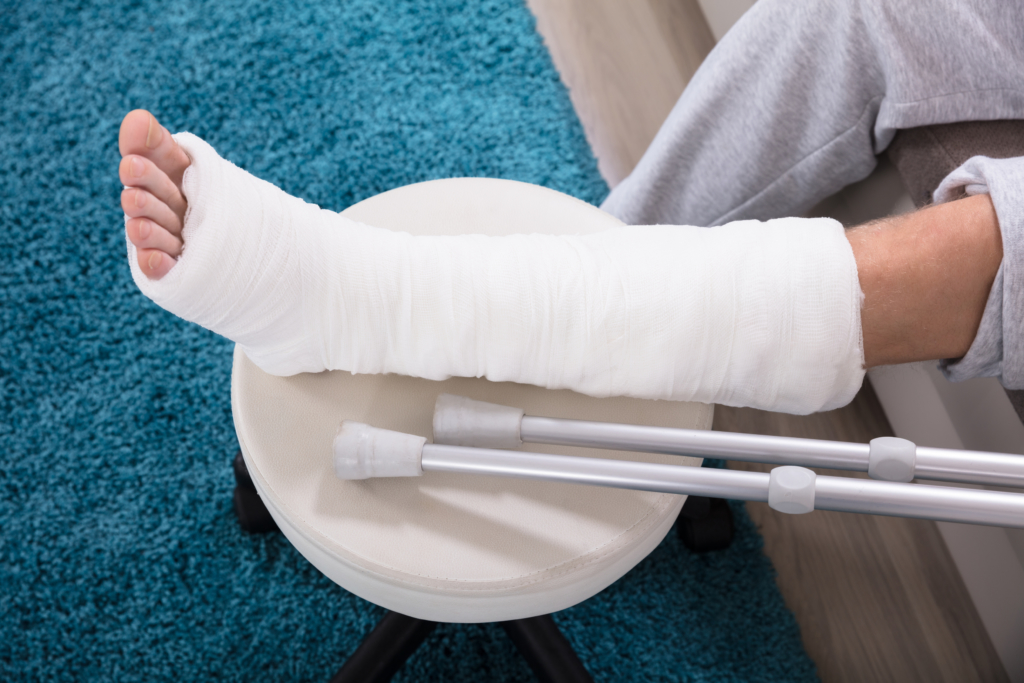Causation of injury, while not the most exciting challenge in the California Workers’ Compensation system, is an all too important threshold question that often relies on a doctor’s opinion on the cause of injury.
Imagine a causation of injury dispute that results in an evaluation with the following exchange:
Patient: “Hey Doc, my leg hurts and I can’t walk on it!”
Doctor: “Let me take an x-ray. Oh, you have a broken leg! How did this happen?“
Patient: “I don’t know, I just know that it started feeling bad over the last few days but I don’t really remember where it happened.”
Doctor: “What places have you been over the last few days?”
Patient: “Well, I went to work, been to the gas station, the grocery store, went out to dinner with my family, I’ve been at home quite a bit as well.”
Doctor: “Oh, since you’ve been at work recently, this broken leg must have come from work.”
We can all see that the exchange between doctor and patient above is nonsensical when it comes to determining the cause of an injury. If an individual doesn’t know how they were injured or how they contracted an illness, a doctor guessing cannot possibly constitute a medical opinion based on substantial medical evidence.
The “Glossary of Terms and Abbreviations” in the Labor Code has a useful term called SWAG, essentially meaning a wild guess by a doctor. It’s a funny term, a quick Google search and you will laugh that this abbreviation is in the California Labor Code. As you can imagine, these guesses are not allowed.
We know from Escobedo and Garza that a PQME report cannot be based on “surmise, speculation, conjecture or guess.” Additionally, an award based solely upon conjectural evidence cannot be sustained. (Travelers Ins. Co. v. Industrial Acc. Com).
Over the last few years, we have seen a change in the use of the panel qualified medical evaluators (PQMEs) and the issue of causation of injury. We are all familiar with doctors that will review medical history, job descriptions, and patient symptoms, and come back to us with a conclusion that a continuous trauma injury has occurred and that that continuous trauma was due to an individual’s employment.
What we see now is an attempt to have these PQMEs issue an opinion on causation of injury with respect to a specific injury claim. While that in and of itself is not novel, the requirements for a PQME to generate a report that constitutes substantial medical evidence while opining on the causation of injury is sometimes incomplete.
The example I like to use is an individual who goes to the QME with a broken leg. The doctor is able to determine that the injured worker has a broken leg, can tell us whether surgery is needed or whether a cast would be sufficient, and what the future medical care will end up looking like. What a doctor cannot do, when faced with an individual who has a broken leg, is tell us where the individual broke that leg. To do this, the doctor would need factual evidence above and beyond the existence of the injury.
Labor Code 4628 states very simply that the evaluating position is required to “Tak[e] a complete history.” But what does this mean, and what does this mean when it comes to determining whether a specific injury occurred at a place of employment or occurred somewhere else?
For more clarification we go to 8 Cal Code Regulation section 10606 which has a list of 15 requirements that a medical-legal report must have. The second requirement states that the doctor must take a “History of the injury”
But what do we do in cases, such as Covid, where the history of the injury are both unknown to the doctor and also unknown to the applicant? How would the doctor be able to make a determination that the injury occurred at work, at home, through a casual social interaction, without it being pure guesswork. The answer seems to be that they cannot make a determination as to where a virus was contracted without some guesswork.
In light of the fact that the doctors may end up making educated guesses based upon probabilities, it becomes incumbent upon defendants to show where injuries “probably” occurred.
Providing information to the doctor such as the number of individuals that a person interacts with in the workplace and the number of individuals that they interact with in their personal life would therefore be relevant. As an example, if a person works in a room by themselves without any interaction with coworkers, but has significant social, family, and societal interactions outside of work, we should be pointing this out that the probability of contracting a disease such as Covid is much higher outside of the workplace.
We should also be focusing on the amount of time that an individual spends at one location versus another. If this is going to be a statistical analysis, then the fact that someone works 40 hours a week and spend 128 hours a week away from work should have a very real bearing on whether something probably happened at work or probably didn’t happen at work. Since two-thirds of our time is not spent working, wouldn’t it stand to reason that it’s more likely that the unknown cause of illness would be something that’s not work-related?
The challenge is, Labor Code 3212.88 subsection (e)allows an individual to show that they contracted Covid-19 “by preponderance of the evidence,” but is this ever really going to be possible?
Given the lack of any direct evidence as to how Covid is contracted by a specific individual, and also not knowing who in everyday public life they may have encountered, concluding that Covid-19 is work-related is simply a guess. And a guess, no matter the amount of SWAG, cannot form the basis for a medical-legal opinion in workers compensation.
Zane P. Uribarri is a partner at Bradford and Barthel’s Ontario office, where he is a member of the firm’s Covid Response Team. If you have questions about workers’ compensation defense issues, please feel free to contact Zane at zuribarri@bradfordbarthel.com or by calling 909.476.0552.
Viewing this website does not form an attorney/client relationship between you and Bradford & Barthel, LLP or any of its attorneys. This website is for informational purposes only and does not contain legal advice. Please do not act or refrain from acting based on anything you read on this site. This document is not a substitute for legal advice and may not address every factual scenario. If you have a legal question, we encourage you to contact your favorite Bradford & Barthel, LLP attorney to discuss the legal issues applicable to your unique case. No website is entirely secure, so please be cautious with information provided through the contact form or email. Do not assume confidentiality exists in anything you send through this website or email, until an attorney/client relationship is formed.



